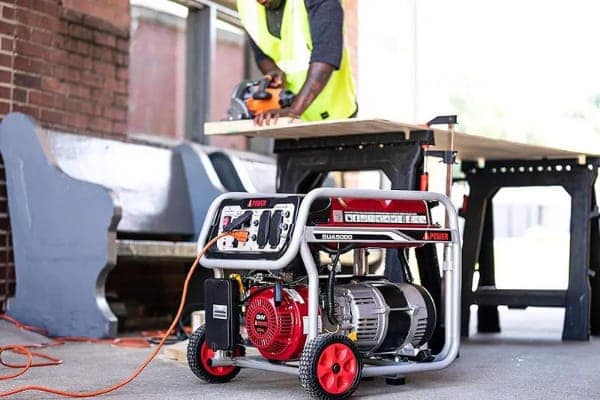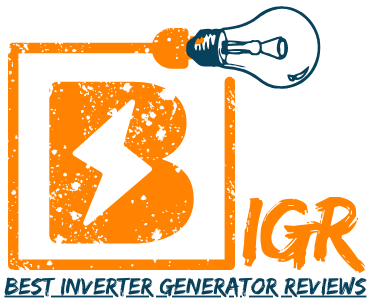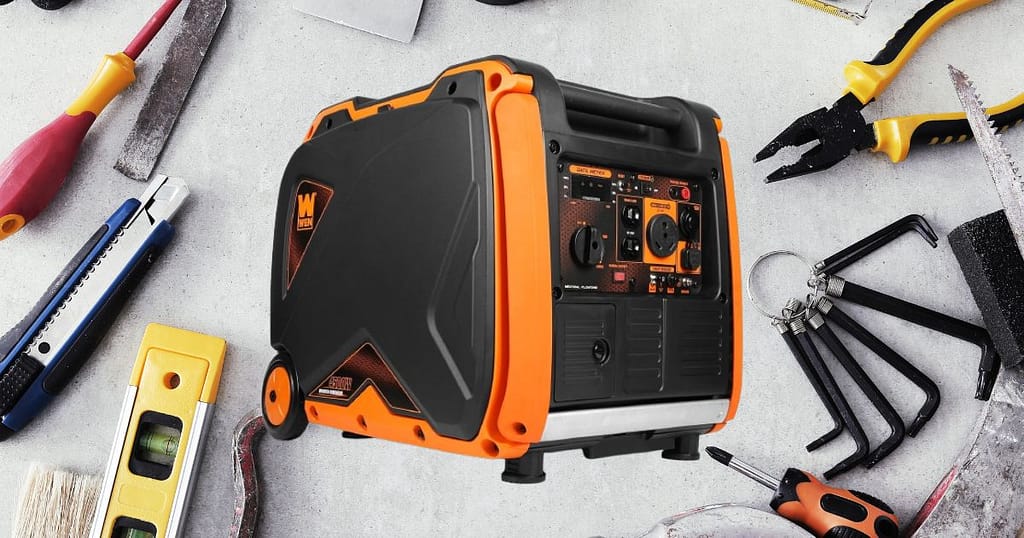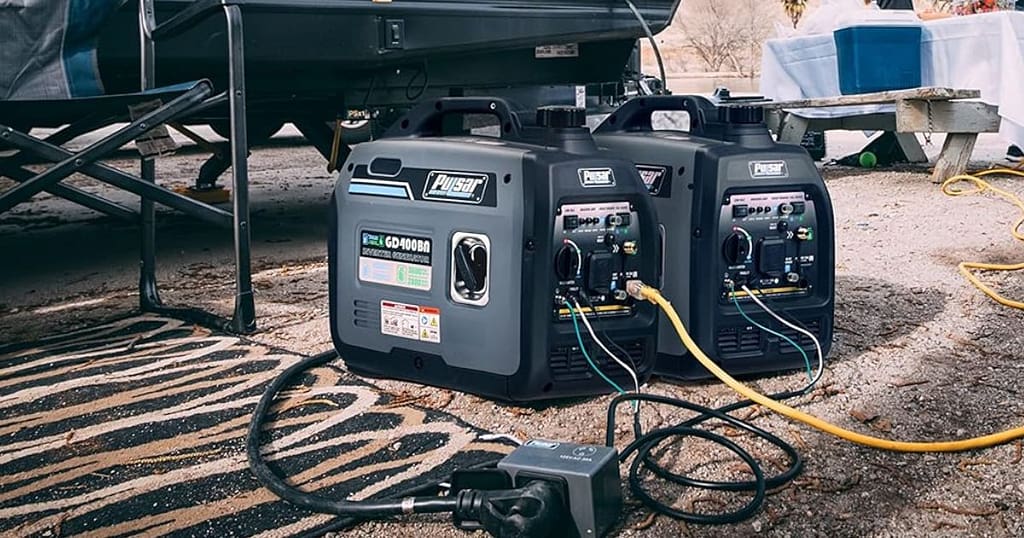
In this blog, we’ll tell your readers about a trendy question which is frequently ask. What can a 5000 generator run? So, after research of people queries regarding this question, we brought deep information that will clear your mind what you can run on 5k watt generator. Just read it and clear your mind.
What can a 5000 Watt generator run?
As more people embrace self-sufficient and off-grid lifestyles, having a reliable backup power source is essential for weathering storms and blackouts. For homes and small properties, a 5000 watt generator can be a versatile solution for running essential appliances and keeping your home comfortable when the power goes out.
While 5000 watts may seem like a lot of juice, you’ll be surprised at how quickly high-wattage devices can max out your generator’s capacity if you’re not careful. The key is understanding your power needs and making smart choices about what you can safely run simultaneously. Let’s break it down appliance-by-appliance to see what a 5000 watt generator is capable of powering.
One of the biggest power hogs is air conditioning. On a hot summer day, nothing beats cranking up the AC to beat the heat. However, your average window unit draws around 1200 watts, which leaves little room for other devices if that’s the only thing running. Portable AC units tend to be slightly more efficient, coming in around 1000 watts. Either way, running the AC will max out over half of your generator’s capacity right off the bat.
Refrigeration is another must-have when the power’s out. A standalone fridge with a small freezer typically uses 700 watts or less, leaving plenty of breathing room for a few other essentials. Just be aware that opening the door frequently can temporarily spike power usage. An upright or chest freezer is even more efficient at around 500 watts.
For water, a small well pump rated at 1/2 HP will draw approximately 1000 watts to keep your taps flowing. Larger pumps or pressure tanks may exceed your generator’s capacity. For cooking and cleaning, appliances like coffee makers, microwaves, dishwashers and pressure cookers each demand 1000-1500 watts on their own.
Heating your home is another big energy user. An electric space heater radiating 1500-1800 watts of warmth may be too much for a single generator to handle on its own. A few smaller ceramic or oil-filled radiant heaters in the 500-1000 watt range can take the chill off individual rooms without overloading the system. Wood stoves or propane heaters are also an option to supplement electric heat.
For laundry, a basic front-loading washing machine pulls around 1150 watts, leaving just over 3000 watts of headroom for other tasks. A dryer, on the other hand, will likely exceed your generator’s capacity with its 2000+ watt appetite. Clotheslines and indoor drying racks are safer backup options in that case.
Smaller appliances like toasters, coffee makers, blenders and microwave ovens each use 500-1000 watts individually. You’ll have more flexibility running a few of these simultaneously to power meal prep compared to bigger items. Lights, TVs, computers and phone chargers only demand 50-300 watts each and won’t strain the generator on their own.
Also, read about What Can a 3500 Watt Generator Run?
Power tools are handy for maintenance and repairs around the homestead, but higher-powered models for tasks like sawing or grinding may max out a 5000 watt generator. Stick to cordless tools where possible, and check tool specs before plugging in. Motors for items like sump pumps or well pumps also demand significant juice. Pay attention to the outlet types as well – while a basic generator may have standard 120V outlets, higher wattage items like air conditioners often require 240V outlets that aren’t always included. Adapters may be needed in some cases. Monitoring your generator’s load and runtime is also important to avoid overtaxing the engine or fuel supply.
With some planning and an understanding of each appliance’s power draw, a single 5000-watt generator can keep essential comforts and conveniences running when the power goes down. Just be sure not to overload it by grouping too many heavy-duty items together. With smart use of a generator, your homestead can stay comfortable and functioning even when faced with outages.
Starting Vs Running Watts
When shopping for a portable generator, you’ve no doubt noticed that the wattage specifications list two different power ratings – the running watts and the higher starting watts. But what do these numbers actually mean, and which one should you pay more attention to when sizing your generator? Let’s break down the key differences between running and starting watts.
The concept of running watts pertains to the highest power capacity a generator can consistently deliver for an extended duration without risking overheating or overloading.This is the rating you’ll see most prominently displayed and is important for determining how many steady-state appliances the generator can power simultaneously without issue. However, it doesn’t tell the whole story of the machine’s capabilities.
Starting watts represent the maximum surge of power a generator can produce for a brief period, usually 10 seconds or less. This short-term overload capacity is crucial because many electric motors require a boosted power level to start up before settling down to their normal running load. Things like air conditioners, freezers, pumps and power tools all place unusually heavy demands on startup that exceed their steady-state running wattage.
The starting watt rating is typically 15-30% higher than the continuous running watts, reflecting the generator’s ability to temporarily supply an oversized load for just long enough to get heavy machinery spinning. Without sufficient starting capacity, motors may fail to turn over or trip protective breakers. So while running watts define the generator’s steady power band, starting watts indicate its surge tolerance for fluctuating loads.
As an example, let’s compare two 5000 watt generators – one rated for 5000 running / 6000 starting, and another at 5000/5500. Both have the same continuous capacity. But the first model’s higher starting spec of 6000 watts means it can accommodate larger starting surges, making it a safer choice for appliances with heavy startup loads. The second generator at 5500 starting watts risks tripping or failing to start larger items.
It’s also worth noting that generator power ratings are based on running loads at a moderate climate and elevation. Hotter temperatures or higher altitudes increase resistance and reduce the true output, often by as much as 10%. So when sizing a generator for your needs, it’s wise to consider both the running and starting wattage specs and leave yourself some overhead headroom above the total connected load.
Also, read What Can a 6500-watt Generator Run?
How Many Appliances Can You Run Simultaneously on 5k Watt Generator?
When disaster strikes and the power goes out, a portable generator can mean the difference between comfort and chaos. But with so many household essentials demanding juice, how do you know what your generator is truly capable of powering at once? The key is doing some simple load calculations upfront.
The first step is making an inventory of all the appliances, tools, and equipment you expect to use with the generator during an outage. For each item, note both the rated running and starting wattages, which you can find on the device or in its manual. If only amps are listed, use Ohm’s Law to convert to watts by multiplying amps by the voltage rating, typically 120 or 240 volts.
Once you have all the power requirements down on paper, it’s time for some addition. Group like items that can safely operate together, such as lights and small electronics that only use 50-100 watts each. Then tally the running wattage for each circuit. Do the same for starting wattage, being mindful that surge loads are typically only for 10 seconds or less during startup.
When totaling loads, also account for power losses from long extension cords by derating the circuit capacity by 10-25%. Hot weather or high altitudes further reduce a generator’s output, so leave adequate buffer room in your calculations. As a rule of thumb, don’t exceed 80% of the generator’s rated capacity for continuous loads.
As an example, let’s consider powering essentials in a 2000 square foot home: A refrigerator uses 800 running watts while a well pump needs 1000. Several LED lights, a TV, and laptop together pull under 300 watts. Their total running load is 2100 watts, comfortably under a typical generator’s 3500-5000 watt rating.
However, factoring in a 1200 watt air conditioner for occasional use would exceed capacity. Running just the A/C during the day and other loads at night provides a safe, staggered approach. You can also prioritize your circuits – powering lights and refrigeration is more important than the A/C if push comes to shove.
By doing some basic math upfront, homeowners gain insight into their true power needs and the appropriate generator size. Overloading can damage both the generator and connected appliances. With careful planning and load calculations, portable generators provide reliable backup power for weathering any crisis.
NOTE: When inventorying your loads as previously discussed, don’t simply add up wattages and call it a day. Leave yourself a comfortable margin, around 10-20% of the generator’s rated capacity, to account for variances and unexpected additional loads that often arise in emergencies. This extra headroom protects both your generator and connected appliances from potential issues.
Overloading can cause harmful voltage drops that exceed acceptable tolerances. Appliances are designed to function within a narrow voltage window, and even small dips outside this range can cause malfunctions, accelerated wear, or safety trip-outs. Sensitive electronics are especially vulnerable to low and unstable power. During outages, reliability is paramount, so it pays to size your generator conservatively.
Exceeding the rated wattage also stresses the generator’s engine and electrical components. Prolonged overloads can lead to premature failure, costly repairs, and lost power exactly when you need it most. Portable generators work tirelessly to keep your home running – returning the favor with prudent load management extends their lifespan and keeps you prepared for future outages.
Additionally, environmental factors like high heat or altitude reduce a generator’s true output below its specifications. A buffer absorbs these reductions to maintain a steady voltage. And emergencies often mean running more loads – powering tools for repairs, charging medical devices, and more. Having reserve capacity prevents overload from unexpected additions to circuits.
With some careful planning and simple math, homeowners can gain complete peace of mind that their portable generators can reliably and safely power all essential loads without compromising safety or equipment longevity. Leaving a 10-20% margin is a small price to pay for dependable backup power when severe weather strikes. Staying within ratings protects your investment and ensures the lights stay on when you need them most.
Can I Run A Well Pump on 5000 Watt Generator?
Reliable access to water is essential for daily living, fire safety, and caring for livestock – making a well pump a critical system to consider when planning backup power needs. But with pumps varying widely in size and power requirements, how can you be sure a 5000 watt portable generator has the juice to keep your well flowing during outages? Some research into your specific pump’s specs is key.
Well pumps are rated primarily by horsepower, with 1/2 HP being a common size for smaller residential wells. As a general guide, 1/2 HP pumps typically draw around 1000 watts continuously but require up to 2100 watts temporarily at startup when the electric motor first engages. Larger 3/4 to 1 HP pumps correspondingly demand 1500-2000 running watts and 3000-4000 starting watts.
It’s important to note that these are estimates – the actual power needs can vary depending on well depth, water table, piping layout, and other unique conditions that affect flow resistance. To get accurate numbers, check the data plate on your existing pump or pump specifications if you haven’t installed one yet. Look for both voltage rating (120v or 240v) and horsepower to determine real-world wattage demands.
With this key information in hand, you can assess generator compatibility. A 5000 continuous watt portable unit should power a typical 1/2 HP pump no problem, with over 3000 watts of running headroom. But pay attention to starting wattage – at 2100 max surge, this pump is right at the edge of the generator’s capacity and could potentially trip protective breakers on startup.
Larger 1 HP pumps push closer to the limit with their 2000 running/4000 starting watt specs. While still technically within ratings, prolonged operation or higher-than-expected startup loads may cause issues over time from overload stresses. It’s generally safer to size your backup power source with at least a 10-20% capacity buffer to allow for variances.
Can I Run a Sump Pump on 5000 Watt Generator?
Whether you’re protecting a basement from flooding or keeping a construction site dry, a reliable sump pump is essential. But with moisture always lurking as a threat, how can you ensure drainage continues uninterrupted even when the power goes out? Proper generator sizing and some pump research provides the assurance you need.
Residential sump pumps commonly fall in the 1/3 to 1/2 horsepower range, powering through a few gallons per minute. As a general guide, 1/2 HP pumps typically draw around 1050 watts continuously but require up to 2150 watts temporarily at startup when the electric motor engages. Smaller 1/3 HP pumps are estimated at 800/1300 watts running/starting.
It’s important not to rely solely on estimates though. To determine your specific pump’s true needs, check the data plate or specifications for voltage, amperage, and horsepower ratings. From there, use Ohm’s Law to calculate wattage demands. This upfront legwork prevents surprises down the line.
On paper, a 5000 watt portable generator appears capable of powering a typical 1/2 HP sump pump with over 3000 watts of continuous headroom. However, pay close attention to starting surge – at 2150 max watts, this pump maxes out generator capacity momentarily during startup. While still technically within ratings, prolonged operation or higher-than-expected inrush currents could potentially cause issues.
For critical applications, it’s generally safer to size your backup power source to comfortably accommodate both running and starting loads with at least a 10-20% overhead buffer. This protects connected equipment from potential voltage fluctuations or overloads that may occur. A larger 6000-watt unit provides greater security in continuously supplying a 1/2 HP pump’s needs.
Which Oil is the Best for Your 5000 Watt Generator?
From regular oil changes to monitoring fluid levels, simple care goes a long way. But with so many oil options on the market, how do you choose the best lubricant for your 5000 watt machine? Let’s break down the key factors.
First, determine your generator’s engine type – most portable units feature small 4-stroke engines for their efficiency and quiet operation. 4-stroke engines require oil meeting the SAE J300 viscosity grade standard for gasoline engines. This specifies multi-viscosity oils labeled SAE 10W-30 or 10W-40 for average operating temperatures between 0°F and 100°F.
If temperatures routinely exceed 100°F where you use the generator, consider upgrading to 5W-30 for better high-temperature protection. In very hot or cold climates, you may need to switch weights seasonally. The oil viscosity should maintain its rating under all operating conditions to properly lubricate internal components.
Next, check the owner’s manual for any oil certification requirements. Look for the API “Donut” logo, verifying compatibility with modern engine designs and emission standards. The API “Starburst” designation indicates advanced performance formulas that resist viscosity and thermal breakdown for maximum protection. Synthetic and blended synthetic oils typically last longer and perform better in extreme temperatures.
Brand reputation also matters – stick to top manufacturers like Quaker State, Valvoline, Royal Purple or Mobil for peace of mind. Private label or no-name oils risk using lower quality base stocks without the rigorous quality control of name brands. And don’t forget additives – look for formulations fortified with detergents, dispersants and other additives to keep the engine clean.
By understanding your generator’s engine type and operating climate, and choosing an oil that meets or exceeds specifications, you set your trusted backup power source up for smooth, dependable performance season after season. Simple fluid maintenance goes a long way in maximizing generator longevity.




